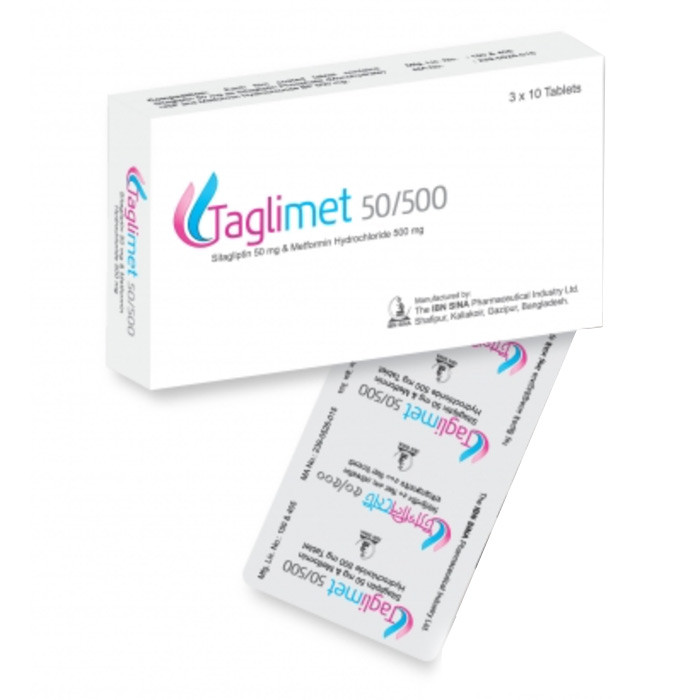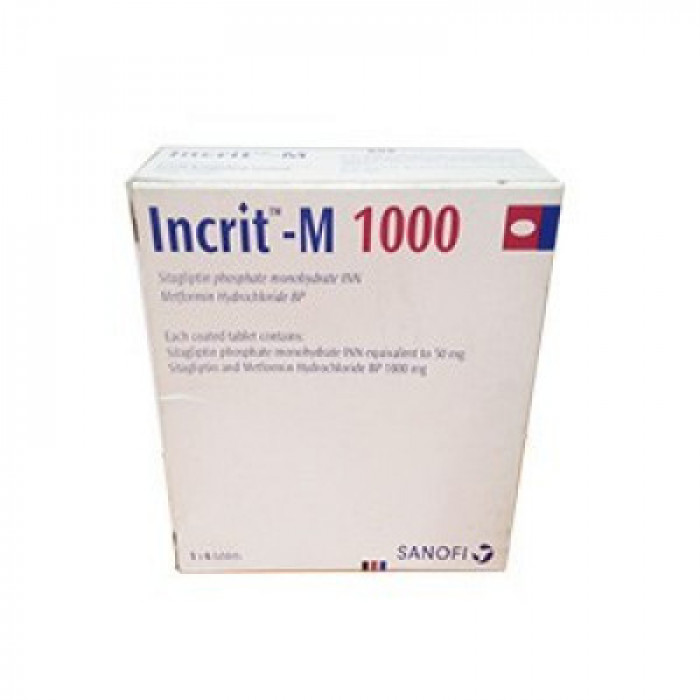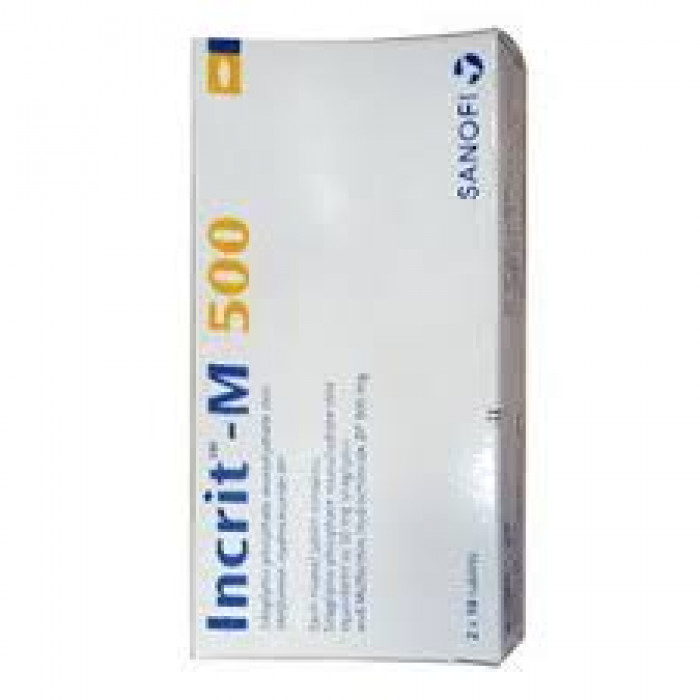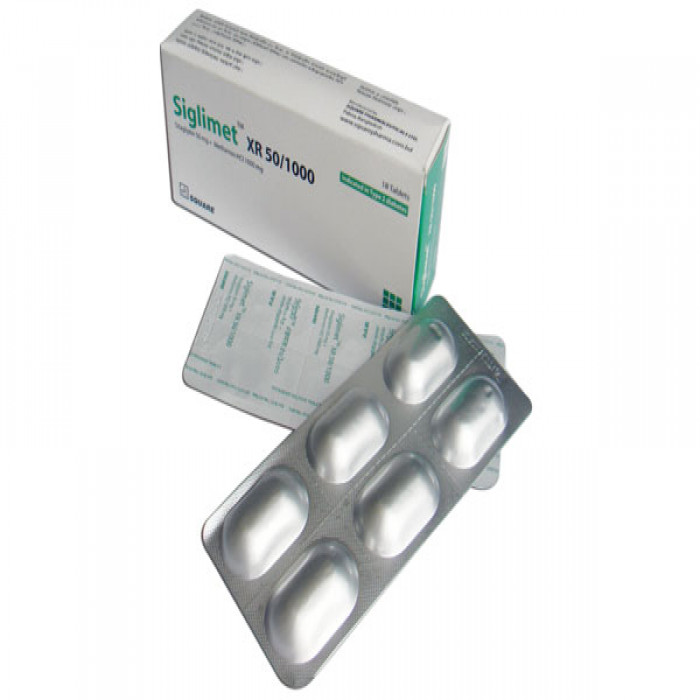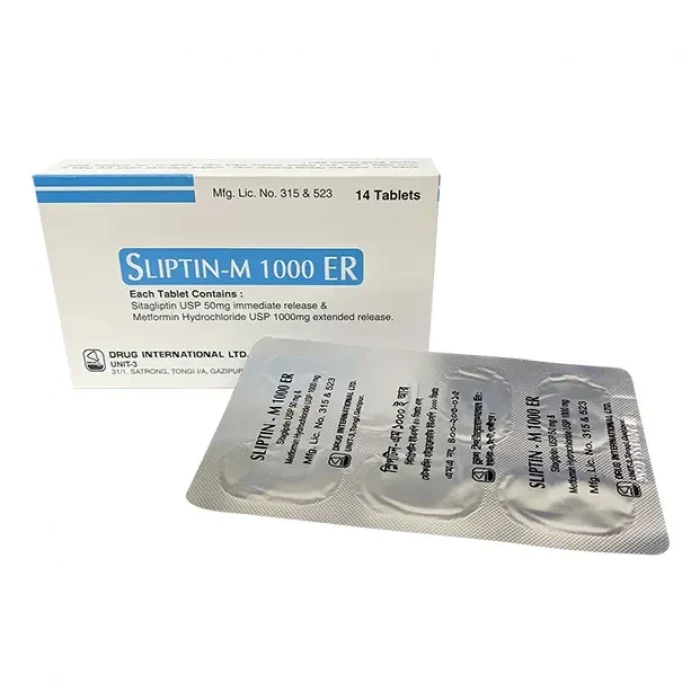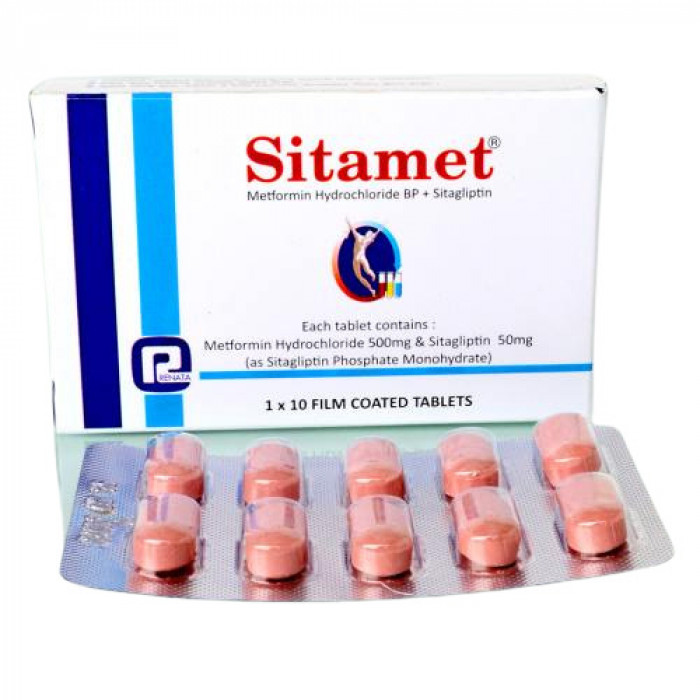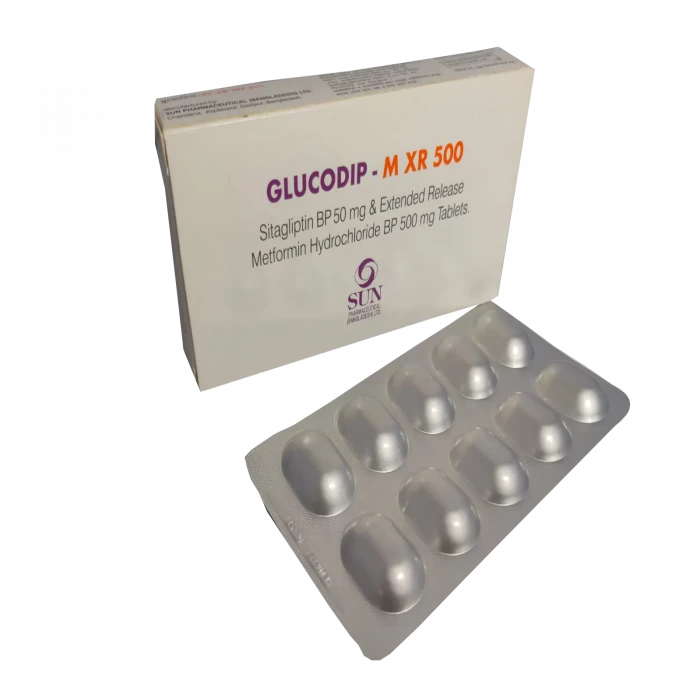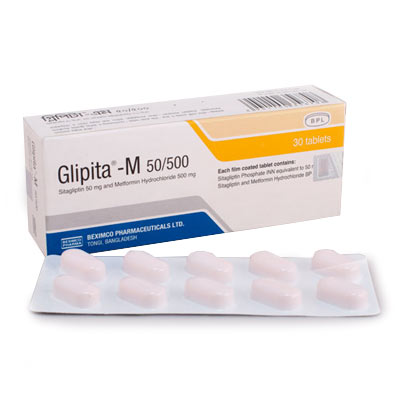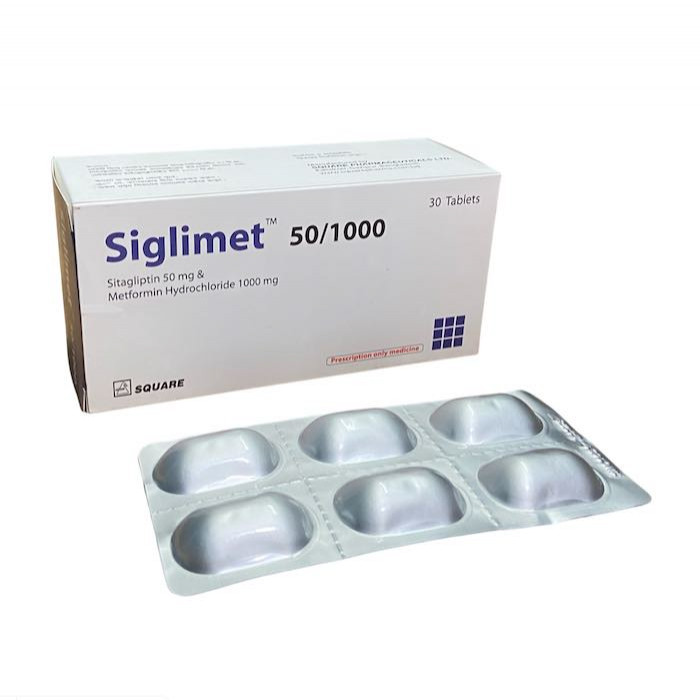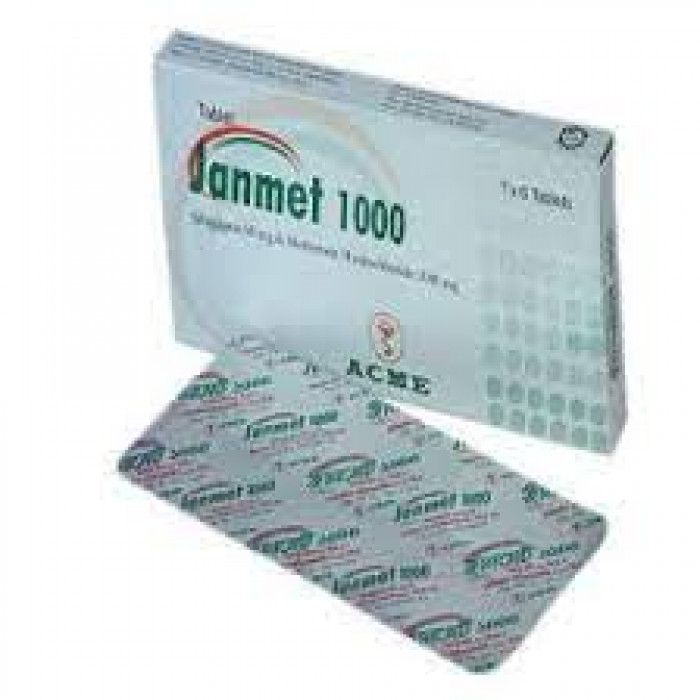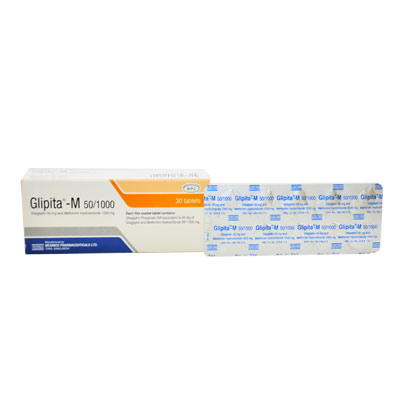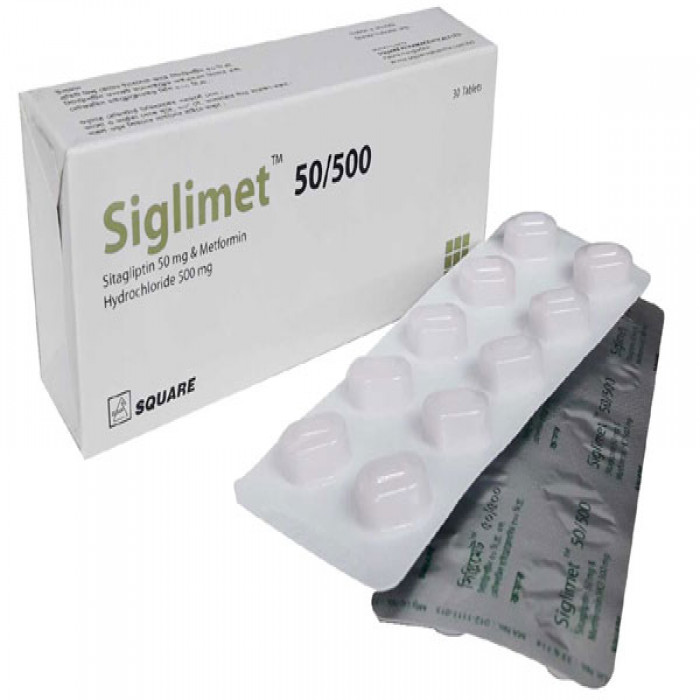
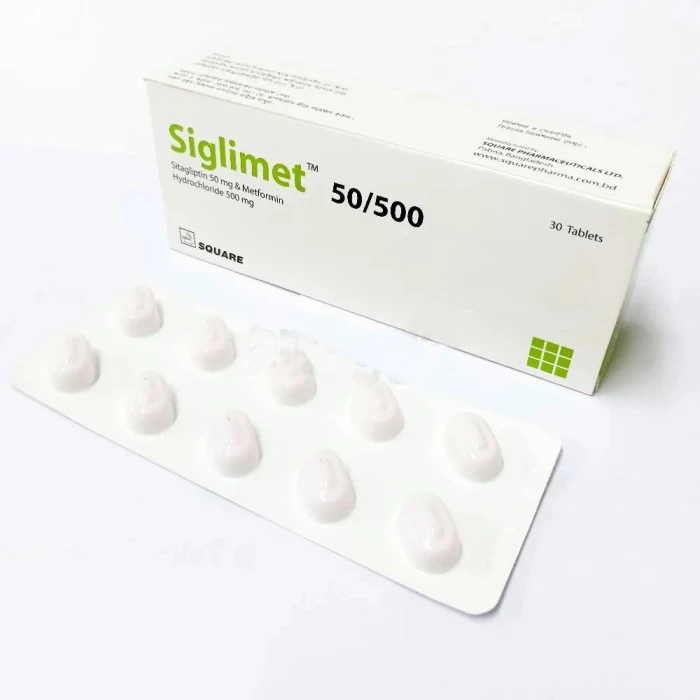
✔ 100% Authentic Product
👁️ Currently Viewing 902
Siglimet 50/500mg Tablet 1 Strip
Siglimet is recommended as an adjunct to diet and exercise to enhance blood sugar control in adults with type 2 diabetes mellitus, especially when combination therapy with sitagliptin and metformin is appropriate.
Not suitable for patients with type 1 diabetes or diabetic ketoacidosis.
Safety has not been established in patients with a history of pancreatitis. It is unclear whether such patients are at higher risk of pancreatitis during treatment.

100% Genuine Products, Guaranteed
Safe & Secure Payments, Always
Fast, Secure & Efficient Delivery
Proper Packaging
 Cash on Delivery - All over Bangladesh
Cash on Delivery - All over Bangladesh Regular Delivery - 12-24 Hours, Dhaka City*
Regular Delivery - 12-24 Hours, Dhaka City* Regular Delivery - 24-48 Hours, All Over Bangladesh*
Regular Delivery - 24-48 Hours, All Over Bangladesh* ফ্রি ডেলিভারি! - ১৪৯৯ টাকা+ অর্ডারে ঢাকা
শহরে ।
ফ্রি ডেলিভারি! - ১৪৯৯ টাকা+ অর্ডারে ঢাকা
শহরে ।
✅ Description:
This combination tablet utilizes two complementary mechanisms to manage blood glucose:
- Sitagliptin (DPP-4 inhibitor): Slows the degradation of incretin hormones (GLP-1 and GIP), enhancing insulin secretion and reducing glucagon levels in a glucose-dependent manner, thereby improving glycemic control.
- Metformin (Biguanide): Lowers glucose production in the liver, reduces intestinal absorption of glucose, and enhances insulin sensitivity in peripheral tissues.
Together, they offer a dual approach to improving glycemic control.
✔️ Dosage & Administration of Siglimet 50/500
Immediate-Release Tablet
- Dosed twice daily with meals.
- Initial dosage depends on the patient's existing therapy.
- Do not exceed 100 mg of sitagliptin and 2000 mg of metformin per day.
Gradual dose escalation is advised to minimize gastrointestinal side effects from metformin.
Extended-Release Tablet
- Taken once daily with the evening meal.
- Can be adjusted based on tolerance and effectiveness.
- Two extended-release tablets (e.g., 50/500 or 50/1000) should be taken together once daily.
Maintain the same total daily dose when switching between immediate and extended-release forms.
In Combination with Insulin or Sulfonylureas
May require dose adjustments to prevent hypoglycemia.
✔️ Side Effects of Siglimet 50/500
- Common (≥5%): Diarrhea, headache, upper respiratory infections, nasopharyngitis.
- Combination with sulfonylurea or insulin: Risk of hypoglycemia increases.
- Metformin-specific: Nausea, vomiting, flatulence, abdominal discomfort, fatigue.
✔️ Drug Interactions
- Cationic drugs (excreted via renal tubules): Use with caution.
- Phenprocoumon: Metformin may reduce its anticoagulant effect; monitor INR.
- Levothyroxine: Can reduce metformin’s effectiveness; monitor glucose levels when initiating or stopping thyroid hormone therapy.
✔️ Contraindications
Do not use in patients with:
- Renal impairment (e.g., serum creatinine ≥1.5 mg/dL for men, ≥1.4 mg/dL for women).
- Acute or chronic metabolic acidosis.
- Known hypersensitivity to sitagliptin or the combination tablet.
- Undergoing radiologic procedures with iodinated contrast (risk of acute kidney injury).
✔️ Use in Pregnancy & Lactation
- Pregnancy Category B: Use only if needed. No adequate studies in humans.
- Unknown if sitagliptin is excreted in breast milk. Use with caution during lactation.
✔️ Precautions & Warnings
- Lactic Acidosis: Rare but serious. Risk factors include renal impairment, liver disease, alcohol abuse, and acute illness.
- Pancreatitis: Discontinue if suspected.
- Renal Function: Assess before starting and at least annually.
- Vitamin B12 Deficiency: May occur with long-term metformin use.
- Hepatic Disease: Avoid use.
- Allergic Reactions: Rare but may include anaphylaxis, angioedema, and skin reactions such as Stevens-Johnson syndrome.
- May need temporary insulin substitution during periods of stress (fever, surgery, trauma, etc.).
- No proven benefit in reducing macrovascular complications.
✔️ Storage:
- Store below 25°C, away from moisture and light.
- Keep out of reach of children.
- Do not use beyond expiry date.
- Dispense only on prescription.
⚠️Disclaimer:
At ePharma, we’re committed to providing accurate and accessible health information. However, all content is intended for informational purposes only and should not replace medical advice from a qualified physician. Please consult your healthcare provider for personalized guidance. We aim to support, not substitute, the doctor-patient relationship.




